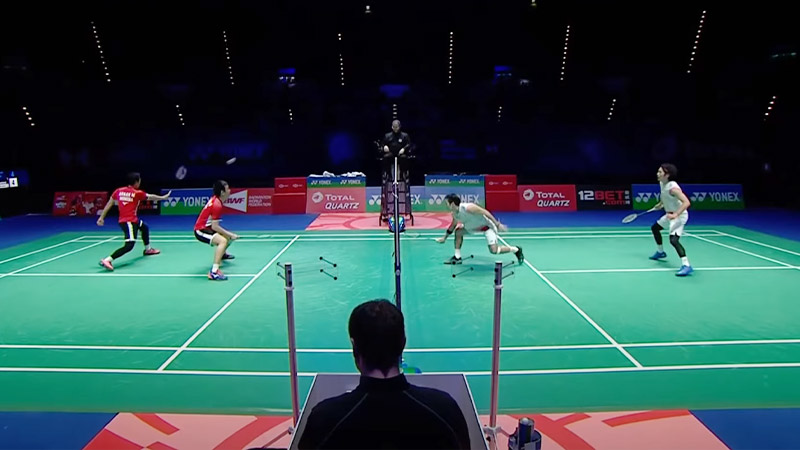Badminton is a dynamic sport that demands not only physical agility but also a deep understanding of the intricacies that make each shot count.
One such critical element is the angle of release. In this blog post, we delve into why is angle of release is important in badminton.
It’s the factor that separates a well-executed smash from one that ends up in the net, a precision drop shot from an imprecise one, and a powerful clear from a weak one.
Understanding the angle of release allows players to control the trajectory, speed, and placement of their shots. It influences strategy, deception, and the ability to exploit opponents’ weaknesses.
We will explore how the angle of release can be a game-changer in your badminton matches, helping you gain an edge over your rivals. Stay focused.
What Is Angle of Release?
The angle of release, often referred to as the launch angle, is a critical concept in physics and sports science. It represents the angle at which an object or projectile is launched or released into the air relative to the horizontal plane.
In sports such as basketball or golf, the angle of release is crucial for achieving the desired trajectory and distance for a shot or swing.
For instance, in basketball, the angle of release can influence whether a shot makes it through the hoop.
A shallower angle may result in a flat trajectory, increasing the likelihood of hitting the rim, whereas a steeper angle can provide a better chance of the ball going in.
The angle of release plays a pivotal role in determining the path and outcome of a projectile’s motion.
Why Is Angle of Release Important in Badminton?
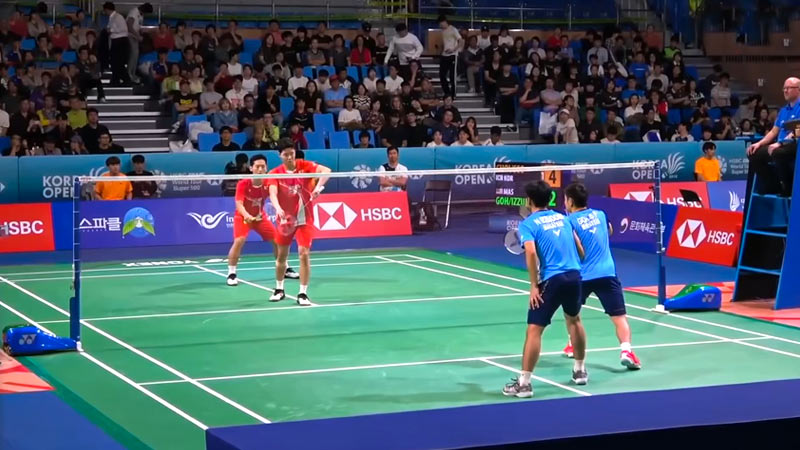
The angle of release is vital in badminton for several reasons:
Shuttlecock Trajectory
The angle at which a badminton player releases the shuttlecock from their racquet significantly affects its trajectory.
A steeper angle of release will result in a higher shuttlecock flight, while a shallower angle produces a flatter trajectory.
Players need to adjust this angle to clear the net, accurately place the shuttlecock, and control its path during rallies.
Clearing the Net
To ensure that the shuttlecock clears the net when hitting a shot in badminton, players must use the correct angle of release.
A too-steep angle may cause the shuttlecock to strike the net, while a too-shallow angle may result in the shuttlecock falling short on the opponent’s side of the court.
Drop Shots and Smashes
Different shots in badminton require varying angles of release. For a drop shot, players often use a steep angle of release to gently place the shuttlecock close to the net, making it difficult for their opponent to reach.
Conversely, for powerful smashes, a flatter angle of release generates greater speed and downward trajectory, making it challenging for the opponent to return the shot effectively.
Control and Accuracy
The angle of release is crucial for control and accuracy in rocket badminton.
Players need to be able to adjust this angle to direct the shuttlecock precisely where they want it to go, whether it’s for a delicate drop shot, a deceptive cross-court shot, or a powerful clear.
Proper mastery of the angle of release allows players to maintain control over their shots and strategically outmaneuver their opponents.
The angle of release in badminton is pivotal for achieving the desired trajectory, clearing the net, executing various shots, and maintaining control and accuracy during matches.
Precision and Placement in Badminton
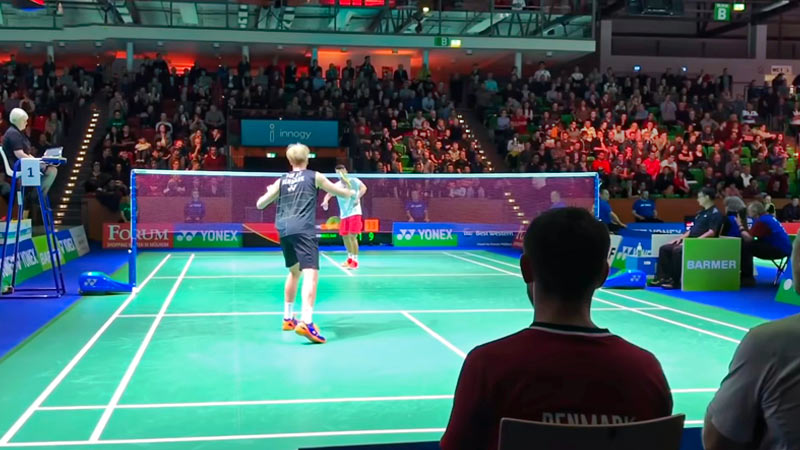
Precision and placement are essential aspects of successful badminton play, influencing the outcome of rallies and matches.
Here are some key points regarding precision and placement in badminton:
Shuttlecock Control
Precision in badminton involves controlling the shuttlecock with accuracy. This means being able to consistently hit the shuttlecock in the desired spot on your opponent’s side of the court.
Precise shots, whether drops, clears, or smashes, allow players to exploit their opponent’s weaknesses and create opportunities to score points.
Targeting Weak Areas
A precise player can identify and exploit their opponent’s weak areas on the court. By consistently placing the shuttlecock in these areas, they can put their opponent under pressure and force them into making mistakes.
This strategy is particularly effective in singles play, where one player has to cover the entire court.
Deception and Misdirection
Precise placement can be used to deceive opponents. Players can make it appear as if they are hitting the shuttlecock to one area of the court and then redirect it to another.
This misdirection can catch opponents off guard and give the player a significant advantage.
Conserving Energy
Precise placement allows players to move their opponents around the court, tiring them out more quickly.
By making the opponent cover a lot of ground, a player can create opportunities to exploit fatigue and win points.
Strategic Play
Precision and placement are integral to strategic play in rocket badminton. Players need to think several shots ahead, setting up the shuttlecock to create opportunities for a winning shot.
This requires not only hitting the shuttlecock accurately but also placing it strategically to force the opponent into a disadvantageous position.
Precision and placement in badminton are critical for controlling the game, exploiting weaknesses, and outsmarting opponents.
Power and Speed Regarding Angle of Release Badminton
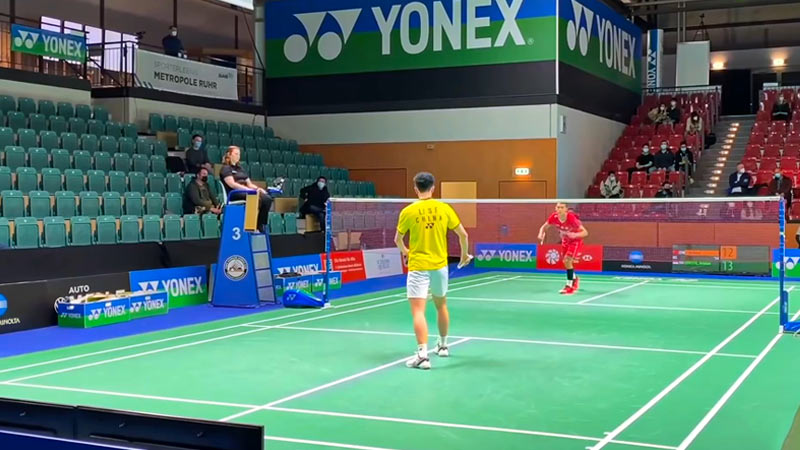
Power and speed, in the context of badminton and the angle of release, play crucial roles in determining the effectiveness of shots and strategies. Here are some key points that illustrate their relationship:
Smashes and Power Shots
A flatter angle of release in badminton, when executed with power, results in faster shuttlecock speeds. Players use this to their advantage when attempting smashes shorts or power shots.
These high-speed shots are challenging for opponents to return, increasing the likelihood of scoring a point.
However, it’s essential to balance power with precision to keep the shuttlecock within the boundaries of the court.
Angle Adjustment for Speed
Players can adjust the angle of release to control the speed of their shots.
A more horizontal angle can impart greater speed to the shuttlecock, while a slightly steeper angle can provide a better balance of speed and placement.
Players must be able to make quick decisions about the angle of release based on the situation in the rally and their intended shot.
Clears and Defensive Play
The angle of release is equally crucial for clears and defensive shots. When attempting to clear the shuttlecock from a defensive position, players often use a flatter angle with enough power to send it deep into the opponent’s court.
This allows them to regain a more advantageous position and buy time. Effective defensive play requires finding the right balance between power and angle to maintain control.
Combining Power and Placement
Powerful shots are most effective when they are strategically placed. Players need to use their understanding of angles to combine power with precise placement.
A well-executed power shot directed at an opponent’s weak area on the court can be devastating. This combination can force opponents to make errors or give up opportunities for easy points.
Quick Reflexes and Decision-Making
To use power effectively in badminton, players need quick reflexes and decision-making abilities.
They must judge the flight of the shuttlecock, determine the right angle of release, and apply the necessary power in a split second. This requires not only physical prowess but also mental acuity.
Strategic Advantage In Angle of Release
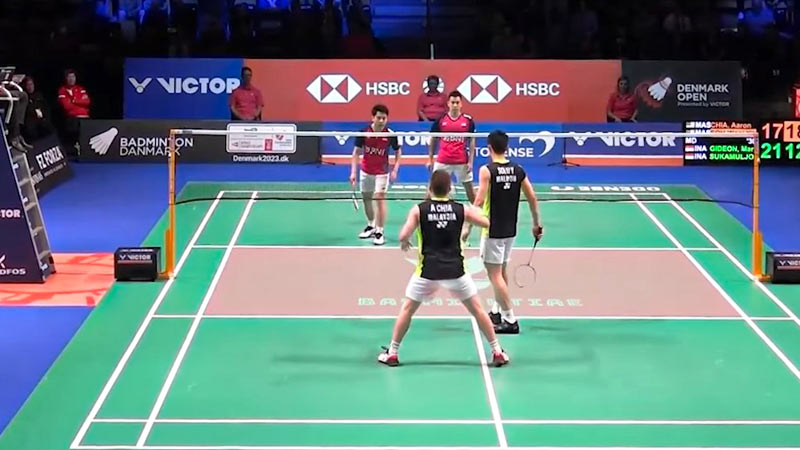
The angle of release in badminton can offer a strategic advantage to players who understand how to use it effectively.
Here are some of the key points regarding the strategic advantage of the angle of release in badminton:
Deceptive Play
A crucial strategic advantage of mastering the angle of release is the ability to employ deceptive tactics.
By subtly changing the angle at the last moment, players can trick their opponents into misjudging the shuttlecock’s trajectory.
This can create openings in the opponent’s defense or force them into unfavorable positions, ultimately leading to successful shots and points.
Exploiting Opponent Weaknesses
Understanding the angle of release allows players to target their opponent’s weaknesses. Players can strategically direct shots to areas where their opponents have difficulty returning the shuttlecock effectively.
For instance, if an opponent struggles with backhand shots, a player can exploit this weakness by using the angle of release to direct shots toward their backhand side.
Variety in Shot Selection
Players who are proficient in controlling the angle of release can employ a wide variety of shots. They can switch between steep angles for drop shots, flatter angles for clears, and even steeper angles for smashes.
This variety makes it challenging for opponents to predict and prepare for incoming shots, giving the player with this skill a significant strategic advantage.
Tactical Positioning
The angle of release can be used strategically to control the positioning of the opponent. For example, a player can hit the shuttlecock deep into their opponent’s backcourt to force them to the rear of the court.
This can limit their ability to cover the net or execute offensive shots effectively, giving the player a better position on the court.
Changing the Game Tempo
The angle of release can also be used to change the tempo of the game. A player can use flatter angles to increase the pace of the rally, putting pressure on their opponent.
Conversely, they can use steeper angles to slow down the game, giving themselves more time to recover or set up for a specific shot. This control over the game tempo can be a valuable strategic tool.
FAQs
What is the height of release in badminton?
The ideal height for releasing the shuttlecock in badminton is generally around 1.5 to 2 meters (4.9 to 6.6 feet) above the net. This height allows for a better trajectory over the net and reduces the chances of hitting it.
What is the speed of release in badminton?
The speed of release in badminton varies depending on the shot being played.
In general, players aim to release the shuttlecock with enough speed to clear the net while also controlling its placement within the court.
Why is 45 degrees the best launch angle in badminton?
A 45-degree launch angle is often considered the optimal angle in badminton because it combines a balance of height and distance.
This angle allows for a good balance between clearing the net and reaching the desired depth in the opponent’s court.
How does the angle of release affect badminton shots?
The angle of release in badminton significantly impacts the trajectory of the shuttlecock. Different angles are used for various shots.
For example, smashes require a flatter angle, while clears and drop shots need a higher launch angle to control the shuttlecock’s flight.
What happens if the angle of release is incorrect in badminton?
Incorrect release angles can result in mistakes on the court. If the angle is too steep, the shuttlecock may hit the net.
If it’s too flat, the shuttlecock may go out of bounds. Finding the right angles is crucial for precision and control in badminton.
Wrapping Up
It’s evident that the angle of release is a fundamental aspect of success in the game of badminton. Whether you’re an aspiring player or a seasoned pro, understanding and mastering this concept can elevate your game.
From precise placement and strategic shots to powerful smashes and deceptive play, the angle of release can be your secret weapon on the court.
By consistently honing your skills in controlling this critical element, you’ll find yourself not only winning more rallies but also outsmarting your opponents and gaining a significant edge in the world of badminton.
So, remember the importance of the angle of release and let it guide your path to becoming a more formidable player on the badminton court. Best of luck.

